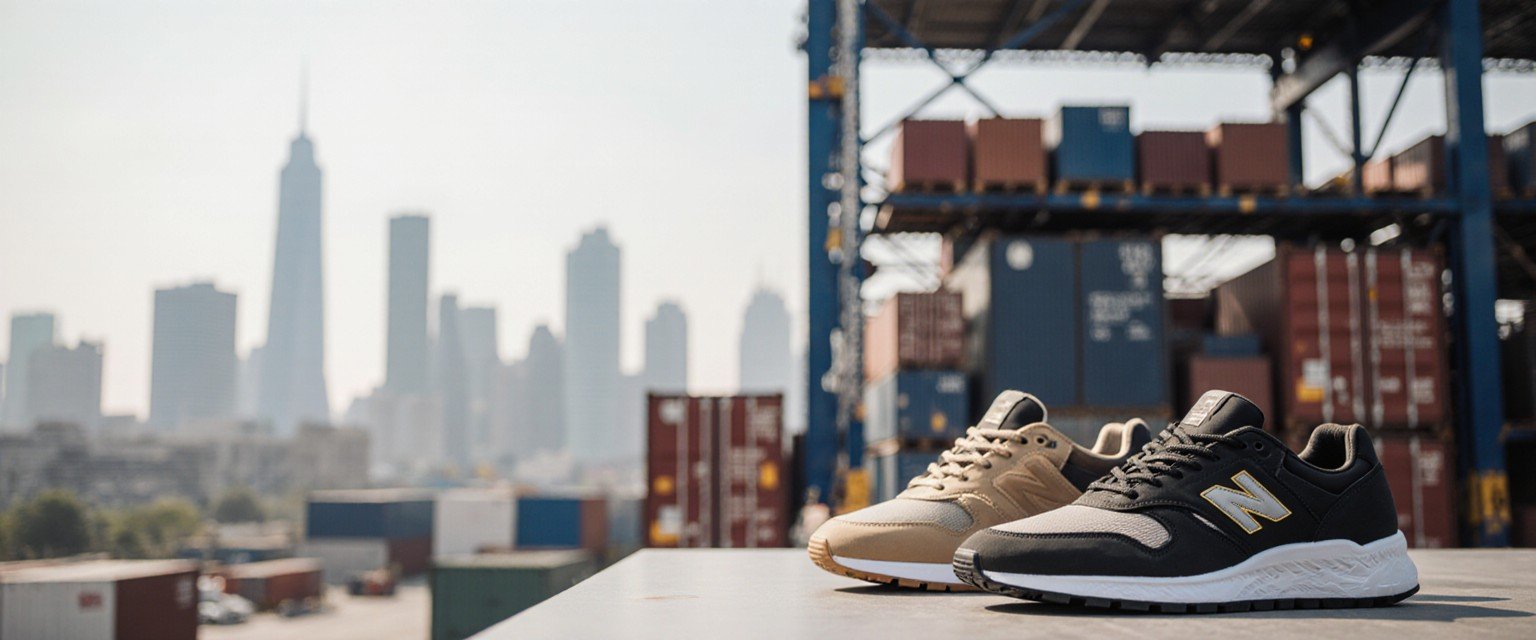Are you overwhelmed by finding the right shoe supplier? Many businesses face this challenge. Understanding the market helps you succeed.
A good shoe supplier provides a seamless experience, from design to delivery. They ensure quality, adhere to ethical standards, and adapt to market trends. Look for partners with proven experience and strong supply chain management.
 Finding a great shoe supplier is vital for your business. It impacts product quality, cost, and speed to market. Let's explore key questions about global shoe production and sourcing. This will help you make smart choices.
Finding a great shoe supplier is vital for your business. It impacts product quality, cost, and speed to market. Let's explore key questions about global shoe production and sourcing. This will help you make smart choices.
Shoe Production by Country 2025? Are you curious about future trends in global shoe production? The landscape is always changing. Understanding these shifts helps strategic planning.
By 2025, China will likely remain the largest shoe producer, but its share may slightly decrease as Vietnam, Indonesia, and India continue to grow their capacities. Automation and sustainable practices will also play a larger role in production across all major manufacturing countries. My two decades in the shoe industry have shown me that the global production map is always moving. What was true a few years ago might not be accurate for 2025. We constantly adapt to these changes.
Shifting Sands of Production
The shoe industry is dynamic. Several factors shape where shoes are made.
- Rising Labor Costs: Countries like China see labor costs increase. This makes other nations more competitive.
- Trade Policies: Tariffs and trade agreements influence sourcing decisions. Businesses look for stable and cost-effective trade routes.
- Automation and Technology: New machines can reduce the need for manual labor. This might keep some production in higher-cost countries.
- Sustainability Demands: Consumers want eco-friendly products. Factories in all regions are adapting. They use sustainable materials and processes.
- Diversification of Supply Chains: Companies want to avoid putting all their eggs in one basket. They spread production across different countries. This reduces risk.
| Country/Region | Projected Trend Toward 2025 | Key Factors |
|---|---|---|
| China | Remains dominant but with continued diversification to other Asian countries | Strong infrastructure, complete supply chains, rising labor costs, focus on high-value products |
| Vietnam | Continued growth, strong in athletic and casual footwear | Competitive labor, stable policies, increasing capacity |
| Indonesia | Steady growth, especially in sports and casual | Growing workforce, government support, competitive costs |
| India | Potential for significant growth, especially in leather categories | Large workforce, developing infrastructure, domestic consumption |
| Cambodia/Myanmar | Emerging low-cost alternatives, but political risk can be higher | Very low labor costs, developing industry |
Where in China are most shoes made? Do you need to pinpoint shoe manufacturing hubs in China? Not all regions specialize in the same types. Knowing where helps you find the right factory.
Most shoes in China are made in specific industrial clusters. Guangdong province, especially Dongguan, is a major center for athletic and casual footwear. Fujian (Jinjiang) excels in sports and outdoor shoes. Zhejiang, where Lucas is based, is strong in women's fashion shoes, flats, and diverse styles.
 Since 1998, working from Shaoxing, Zhejiang, I have seen China's shoe manufacturing landscape evolve. It's not a uniform national industry. Specific provinces and cities have developed their unique strengths and specializations.
Since 1998, working from Shaoxing, Zhejiang, I have seen China's shoe manufacturing landscape evolve. It's not a uniform national industry. Specific provinces and cities have developed their unique strengths and specializations.
China's Shoe Manufacturing Geography
Knowing these regional concentrations is important. It helps you target your search for suppliers.
- Guangdong Province: This province is a powerhouse. Cities like Dongguan and Guangzhou host many large-scale factories. They are known for high-volume production of athletic shoes, casual footwear, and sneakers. The supply chain here is very mature.
- Fujian Province: Jinjiang, in Fujian, is often called the "footwear capital" for sports shoes. Factories here specialize in trainers, running shoes, and outdoor footwear. They have strong material suppliers specific to these types of shoes.
- Zhejiang Province: My home base. Shaoxing and Wenzhou in Zhejiang are known for diverse fashion footwear. This includes women's high heels, ballerinas, sandals, and slippers. We focus on quality and a wide range of styles to meet fashion trends.
- Sichuan Province (Chengdu): This area is growing in importance for women's high-end fashion shoes. They have skilled artisans for intricate designs and luxury materials.
If you are looking for specific types of shoes, going directly to the specialized region can save time and improve quality. For example, for fashionable women's shoes, Zhejiang is a prime location.
| Province/City | Primary Shoe Focus | Key Characteristics | Best For |
|---|---|---|---|
| Guangdong | Athletic, casual, large volume, diverse materials | Mature supply chain, high production capacity | Global sports brands, mass-market casual |
| Fujian (Jinjiang) | Sports, outdoor, basic footwear | Specialized material clusters, cost-effective | Sports brands, outdoor retailers, budget-friendly options |
| Zhejiang (Shaoxing/Wenzhou) | Fashion, women's, specialized in diverse styles | Focus on design, craftsmanship, wide range of materials | Fashion brands, department stores, diverse casual styles |
| Sichuan (Chengdu) | Women's high-end fashion, luxury | Skilled labor, attention to detail | Niche luxury brands, unique designs |
Why are sneakers so popular in China? Are you wondering about the sneaker boom in China? It's a huge market. Several factors drive this trend.
Sneakers are immensely popular in China due to a combination of factors: the rise of sportswear as fashion, growing disposable income among youth, cultural influence from basketball and pop music, increased health consciousness, and aggressive marketing by international brands. I've witnessed first-hand the explosive growth of the sneaker market in China. It's not just about shoes; it's a cultural phenomenon. Our factories in Zhejiang also produce certain types of casual sneakers due to this demand.
The Rise of Sneaker Culture
The popularity of sneakers in China is fueled by several strong trends.
- Fashion and Lifestyle: Sneakers have moved from sports fields to everyday fashion. They represent a casual, modern lifestyle. Young people especially embrace this trend.
- Increased Disposable Income: As incomes rise, more people can afford branded, fashionable sneakers. They see them as status symbols.
- Influence of Celebrities and KOCs: Basketball stars, pop idols, and Key Opinion Consumers (KOCs) heavily influence trends. When they wear certain sneakers, sales skyrocket.
- Health and Wellness Trend: More Chinese are choosing active lifestyles. This boosts the demand for comfortable sports footwear.
- Brand Marketing: International brands like Nike and Adidas invest heavily in marketing in China. They create exclusive designs and limited editions. This creates hype and demand.
- Collecting Culture: Many young Chinese become "sneakerheads." They collect rare or limited-edition sneakers. This drives up secondary market prices and buzz.
Understanding this strong consumer demand helps shape what types of shoes are manufactured and exported from China.
| Factor | Impact on Sneaker Popularity in China | Examples/Evidence |
|---|---|---|
| Youth Culture & Fashion | Sneakers as a key part of daily outfits, blending casual and trendy | Street style blogs, social media influencers |
| Economic Growth | Increased ability to purchase premium and multiple pairs of sneakers | Growth in luxury consumption, online shopping festivals |
| Celebrity Endorsements | Drives demand and hype for specific models | Basketball star endorsements (e.g., LeBron James), music artist collaborations |
| Sports & Wellness | Demand for comfortable and functional footwear for active lifestyles | Increase in gym memberships, running events |
| Brand Strategy | Localized marketing campaigns, limited editions, collaborations | Nike SNKRS app, Adidas collaborations with local artists |
Can I import shoes from China? Are you considering importing shoes from China for your business? It's a very common practice. The answer is a clear yes.
Yes, you can absolutely import shoes from China. This process involves finding the right manufacturer, ensuring quality control, handling shipping logistics, and navigating customs regulations, including tariffs and duties. With proper planning, it is a very feasible and often cost-effective option.
 Since 1998, Lucas has been helping businesses worldwide import shoes from China. From small start-ups to large retail chains, I've guided countless clients through this journey. It's a structured process, not a mysterious one.
Since 1998, Lucas has been helping businesses worldwide import shoes from China. From small start-ups to large retail chains, I've guided countless clients through this journey. It's a structured process, not a mysterious one.
The Import Process: A Step-by-Step Guide
Importing from China is a well-established path for many companies. Here is how it generally works:
- Supplier Identification and Vetting: Find a reputable manufacturer. Check their certifications (like BSCI, SEDEX). Ask for references and sample products. This is where my company, Lucas, can help.
- Product Development and Order Placement: Work with the supplier on design, materials, and specifications. Finalize quantities, pricing, and payment terms in a clear contract.
- Quality Control (QC): Arrange for inspections at different stages of production (e.g., during production, pre-shipment). This ensures the goods meet your standards.
- Logistics and Shipping: Decide on the shipping method (sea freight for cost, air freight for speed). Work with a reliable freight forwarder who will manage the transport from the factory to your port.
- Customs Clearance and Duties: Your freight forwarder or a customs broker will prepare the necessary documents. These include commercial invoice, packing list, and bill of lading. You will pay import duties and taxes based on your country's regulations.
- Receiving and Distribution: Once cleared, your goods are delivered. It's important to inspect them upon arrival.
It's common for overseas buyers to feel a bit overwhelmed at first. However, partnering with an experienced manufacturer like Lucas can simplify this process significantly. We handle the complexities so you can focus on your business.
Conclusion Understanding global shoe production shifts, key Chinese manufacturing hubs, sneaker popularity, and import procedures provides a clear path for successful shoe sourcing.
